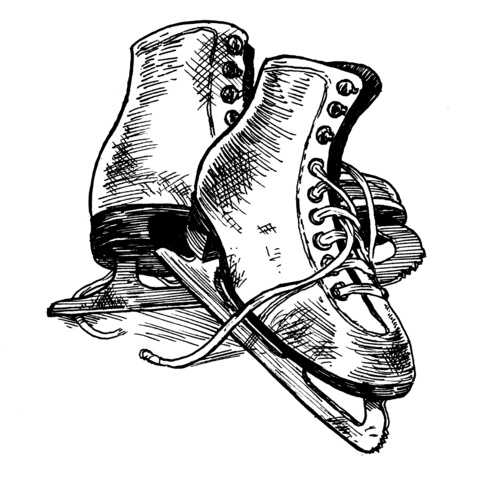
In the Believer’s January issue, Sarah Marshall delved deep into the story of Nancy Kerrigan and Tonya Harding in the 1994 Olympics with an eye on femininity, celebrity, and the prevailing media narrative of the time. This week we asked her to share her thoughts on ESPN’s latest 30 for 30 documentary, The Price of Gold (airing now) which revisits the same characters and issues.
Are you ready for the Olympics?
The Sochi Games start in two weeks, and if you think you can escape them, you should probably give up that charade right now. Even if you can stay away from Twitter and Facebook and all other social media for sixteen days, even if you can avoid chatty coworkers and emails from friends, even if you can convince yourself that you just don’t care about even the smallest aspect of the Olympics—not the now-inevitable doping controversies, not the ceremonial flourishes and flubs, not the artistic pinnacles reached by the great minds behind the hours’ worth of commercials for Visa and Nike and McDonald’s and Coke—the Olympics will find you. And if you can resist everything else, they will still use their greatest weapon to bring you into the fold: narrative.
Is there any venue that produces more narrative than the Olympic games? Forget all the various writing festivals and conferences that take up the bulk of the calendar year; forget all the graduates of all the MFA programs in the country; forget even the publishing houses. If you want a story, or better yet want to find out what story is, you’ll get a far greater education by spending the night watching the Olympics than you would after a weekend in the library stacks. When it comes to narrative, the Games have it all: the poised young prodigy living her most outrageous dreams; the athlete returning for a second Olympics, determined to prove himself after tragedy, injury, or past failure; and, of course, the rivalry.
Is there anything sweeter than an Olympic rivalry? And, more to the point, is there anything more attractive to viewers? Even Michael Phelps’ unprecedented winning streak in the 2008 Games pales in comparison to his record-breaking wins in 2012: in 2008 no one could touch him, but in 2012 he was competing not just against other swimmers, but against age, history, and himself. The same holds true for national rivalries: it’s hard to imagine 1980’s “Miracle on Ice” seeming quite so miraculous if the American hockey team had scored a last-minute victory against, say, Sweden or Norway, rather than the Soviet Union. Or Mary Lou Retton’s flawless vault in the 1984 all-around, and the...
You have reached your article limit
Sign up for a digital subscription and continue reading all new issues, plus our entire archives, for just $1.50/month.
Already a subscriber? Sign in




